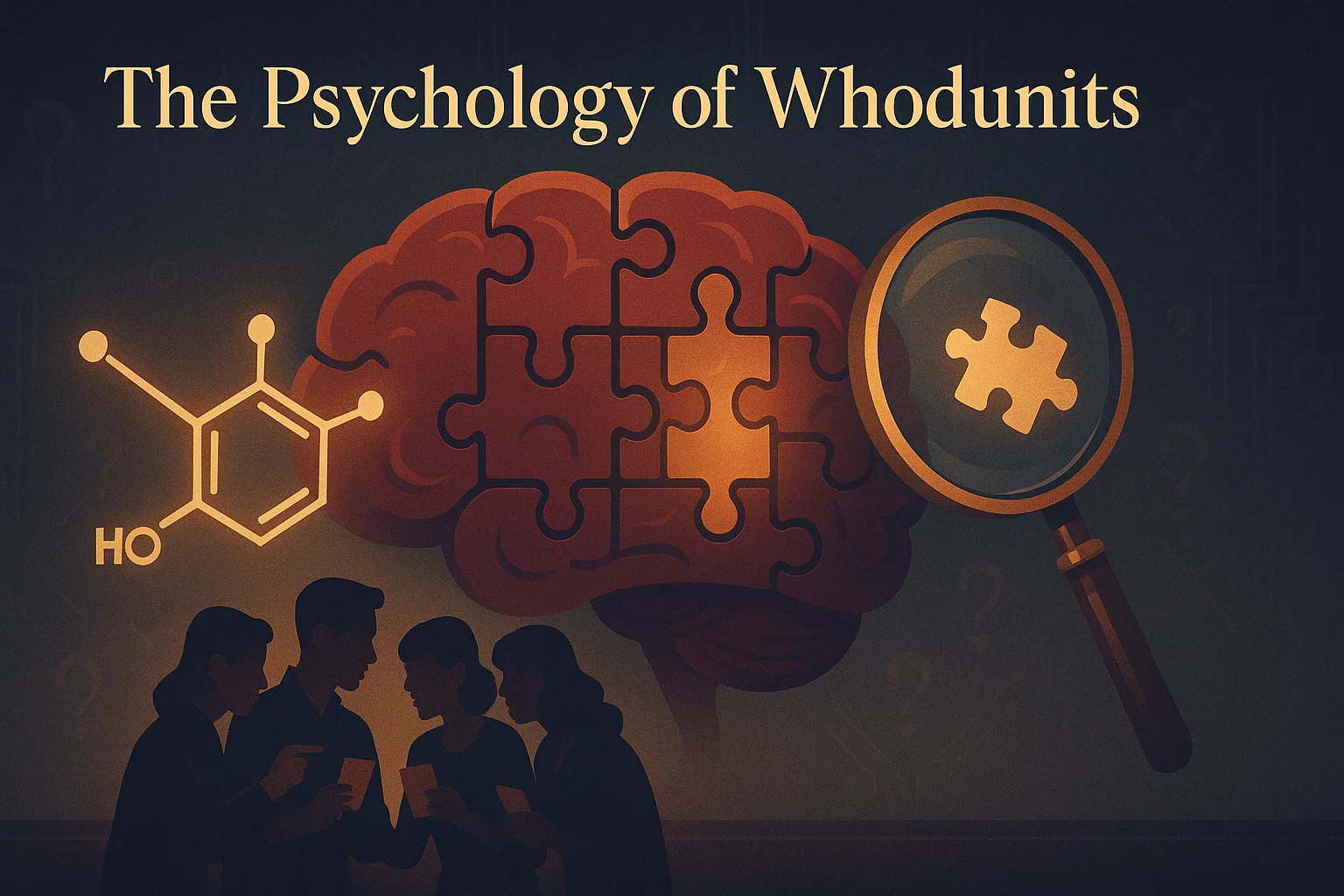The Psychology of Whodunits: Why We Love Solving Crimes

The Psychology of Whodunits: Why We Love Solving Crimes
From dopamine hits to evolutionary survival skills, here’s what science says about our irresistible urge to crack a good mystery.
1. Dopamine & the Brain’s Reward Circuit
Every time you connect two clues or rule out a suspect, your brain delivers a
micro-dose of dopamine — the same neurotransmitter released when you
accomplish a goal or win a game. Neuroscientists call this the
prediction-reward mechanism: you form a hypothesis, test it, and receive a chemical
“high” if you’re correct. A well-paced mystery strategically spaces these dopamine spikes,
keeping players hungry for the next clue.
2. Hard-Wired Pattern Seeking
Humans evolved to spot patterns — rustling grass might mean a predator. Psychologists term
this bias apophenia. Whodunits exploit that instinct, scattering evidence and
red herrings so our brains can’t resist connecting dots, even when some links are false.
3. The Need for Cognitive Closure
Social-cognition research shows most people possess a
Need for Closure — an uncomfortable tension when questions remain unanswered.
Mysteries dangle that discomfort on purpose; the eventual reveal resolves it, producing relief
and satisfaction. Without a tidy solution, readers and players feel legitimately agitated.
4. Enjoying “Safe Fear” & Controlled Threat
The concept of benign masochism describes why we love roller-coasters or spicy food:
we experience danger while knowing we’re actually safe. Murder stories trigger fear, but in a
controlled environment — the parlor, the page, or your living room game night.
6. Narrative Transportation & Flow
When engrossed in a gripping plot, we enter narrative transportation, losing track of
time and surroundings. This flow state reduces stress and boosts mood, which partly explains
the “post-mystery glow” players feel after the big reveal.
7. Collective Problem Solving & Belonging
Solving a puzzle as a team releases oxytocin, the bonding hormone. Collaborative
deduction reinforces group cohesion — a sneaky reason corporate ice-breakers and family
gatherings love murder-mystery kits.
Host Takeaways: Leveraging Psychology in Your Game
- Stagger clues to trigger consistent dopamine hits.
- Alternate red herrings with solid evidence to exploit pattern bias.
- End acts on cliffhangers to heighten the Need for Closure.
- Create atmospheric tension with lighting & music for safe fear.
- Encourage role-play to exercise social-detection skills.
- Keep rules simple so players slip quickly into flow.
- Plan team tasks (e.g., decode ciphers together) for oxytocin-boosting collaboration.
FAQs
Do mystery games actually improve cognitive skills?
Studies link puzzle solving to enhanced working memory and mental flexibility, though more
research is needed for long-term effects.
Why do some people dislike mysteries?
Individuals with low tolerance for ambiguity can find unresolved tension stressful rather
than fun. Shorter or beginner-friendly mysteries often help.
Is there a difference between reading and playing a mystery?
Reading offers vicarious deduction, but active play provides agency, increasing dopamine
release and social bonding.

5. Practicing Social-Detection Skills
Evolutionary psychologists argue that reading subtle cues helped our ancestors detect deceit
within tribes. Mysteries simulate that exercise: we interpret facial expressions, alibis,
and motives, honing real-world empathy and lie-detection abilities.